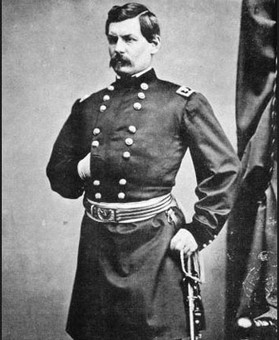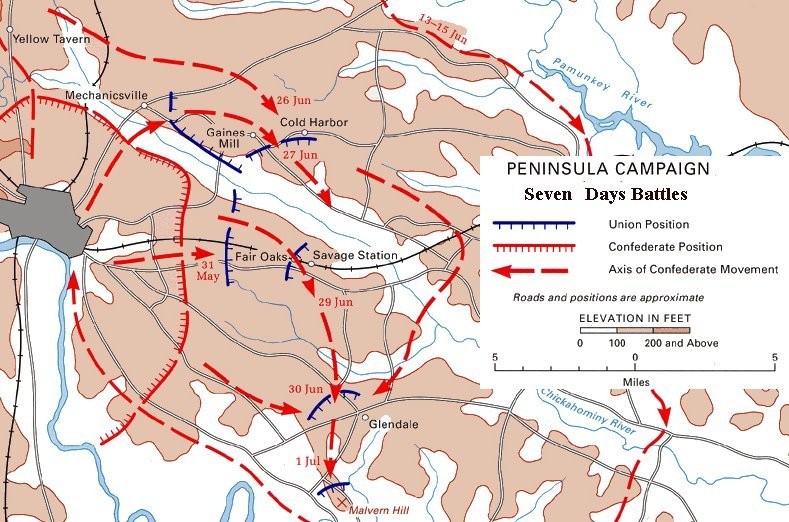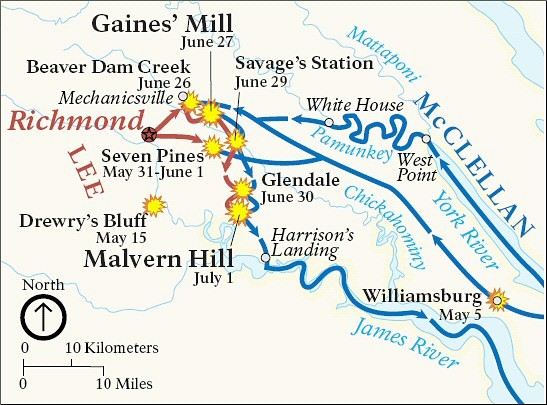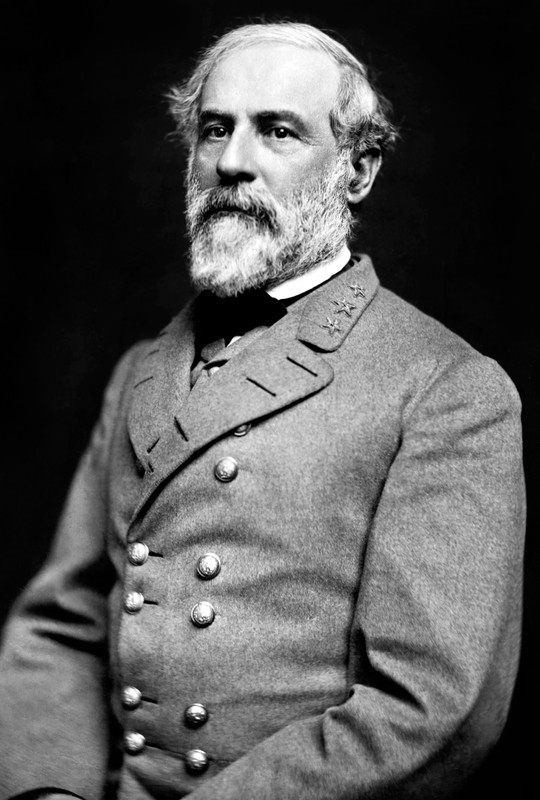Battles of the Seven Days
Introduction
Text-to-speech Audio
The Battles of the Seven Days were a series of battles around Richmond, Virginia during the Civil War from June 25 to July 1, 1862. The battles pitted the Confederate forces of General Robert E. Lee against the Union Army of the Potomac commanded by General George B. McClellan. Lee was Determined to push McClellan back from the Confederate capital and proceeded to attacked his forces repeatedly at Mechanicsville, Gaines' Mill, Savage's Station, Frayser's Farm, and Malvern Hill. Though McClellan would seem to have won most of the battles, he retreated until he reached Harrison's Landing on the James River. The retreat was as much a detriment to Union morale as it was a boost to that of the Confederacy.
Images
General George B. McClellan

Battles of the Seven Days Movement

Battles of the Seven Days Map

General Robert E. Lee

Backstory and Context
Text-to-speech Audio
Prior to
the events of the Battles of the Seven Days, the Army of Northern Virginia
had been put under the leadership of a new commander General Robert E. Lee. He was expected to
defend the Confederate capital of Richmond against
George B. McClellan and his well-trained Army of the Potomac. McClellan
move slowly and landed on the Virginia Peninsula to approach Richmond from the
east. Even though he had built a disciplined army of over 150,000 men, he
was in constant fear that the Confederate army
was larger than it actually was.
Lee attacked the right flank of the Army of the Potomac to begin the Battles of the Seven Days. In spite of poorly coordinated attacks at Mechanicsville and Gaines Mill, Lee was able to push McClellan's forces away from Richmond. He then attempted to stage a decisive battle at Malvern Hill, but the well-fortified Army of the Potomac repelled multiple waves of Confederate advances. Of Lee's 20,000 casualties, 5,000 occurred at Malvern Hill.
The retreating Union forces reached the James River where they were supported by Union gunboats and Lee withdrew to tend to the defenses of Richmond. Subsequently, McClellan was relieved as General-in-Chief of the Union Army as President Lincoln felt he was too timid in the field. McClellan’s failure to capture Richmond and withdrawal of the Union’s Army of the Potomac from the Yorktown Peninsula ended of the Peninsula Campaign.
Lee attacked the right flank of the Army of the Potomac to begin the Battles of the Seven Days. In spite of poorly coordinated attacks at Mechanicsville and Gaines Mill, Lee was able to push McClellan's forces away from Richmond. He then attempted to stage a decisive battle at Malvern Hill, but the well-fortified Army of the Potomac repelled multiple waves of Confederate advances. Of Lee's 20,000 casualties, 5,000 occurred at Malvern Hill.
The retreating Union forces reached the James River where they were supported by Union gunboats and Lee withdrew to tend to the defenses of Richmond. Subsequently, McClellan was relieved as General-in-Chief of the Union Army as President Lincoln felt he was too timid in the field. McClellan’s failure to capture Richmond and withdrawal of the Union’s Army of the Potomac from the Yorktown Peninsula ended of the Peninsula Campaign.
Sources
Allison, William T., Jeffrey Grey, and Janet G. Valentine. American Military History: A Survey from Colonial Times to the Present. Upper Saddle River, NJ: Pearson Education, Inc., 2007. 159. Print.
http://www.pbs.org/civilwar/war/map6.html
http://www.britannica.com/EBchecked/topic/536437/Seven-Days-Battles
http://www.civilwar.org/battlefields/seven-days-battles/#Malvern_Resources
